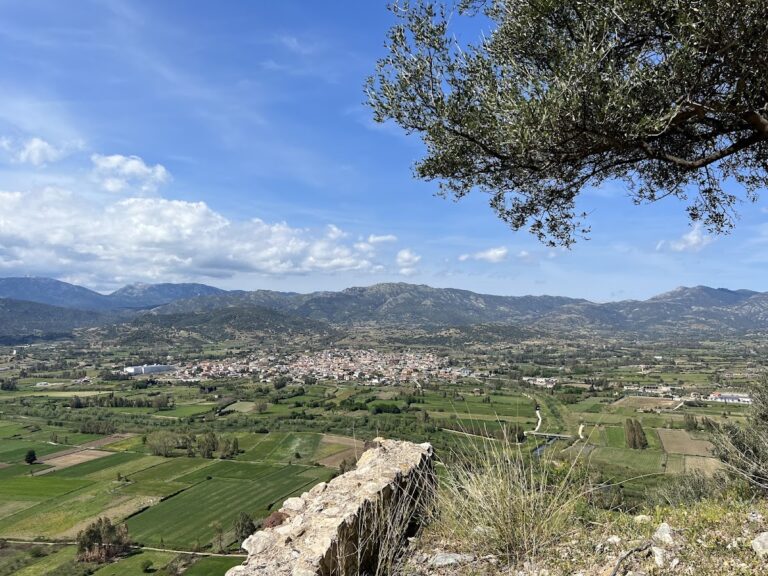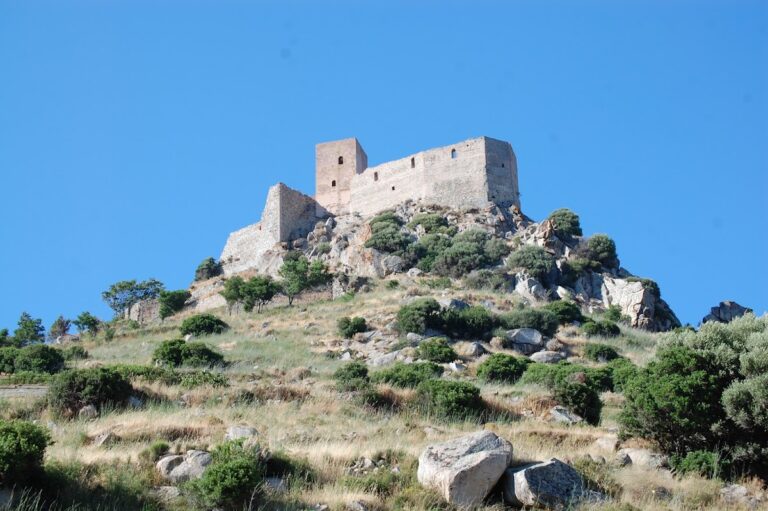Castello di Medusa: A Medieval Fortress in Lotzorai, Italy
Visitor Information
Google Rating: 3.6
Popularity: Very Low
Google Maps: View on Google Maps
Official Website: www.comunedilotzorai.it
Country: Italy
Civilization: Unclassified
Remains: Military
History
The Castello di Medusa is a medieval fortress situated in the municipality of Lotzorai, Italy. Its origins lie in the earlier medieval period, constructed by local powers to oversee and defend the fertile valley adjacent to the Río Girasole river and the nearby coastline.
The site’s importance predates the castle itself, as archaeological and historical records show the area was inhabited since prehistoric times. It stands in a region historically linked with the ancient city of Sulci, mentioned in the Roman Antonine Itinerary. Local tradition, documented by the scholar Vittorio Angius in the 19th century, holds that the castle was built atop the ruins of a temple dedicated to Punic and Roman deities. This same tradition ascribes the fortress’s foundation to a legendary figure known as Queen Medusa, lending the site a layer of mythic significance alongside its historical function.
The earliest written mention of the castle dates to 1305, when it was recognized as “castrum de Ollastro” in the property records of Judicessa Giovanna Visconti. Giovanna was the heir of Nino Visconti, a ruling figure in Sardinia, highlighting the castle’s role as a territorial asset during the medieval period. During the 12th and 13th centuries, the castle marked a frontier between the Judicates of Gallura and Calari, two important Sardinian realms. This border position meant the fortress held both military and administrative importance amid the shifting political and military struggles in Sardinia.
In 1258, control over the Ogliastra area, including the castle, passed to Giovanni Visconti, the judge of Gallura, aligned with the maritime republic of Pisa. Around 1308, Pisa is reported to have deliberately damaged several castles in the region, including this one, in an effort to hinder the invading Aragonese forces. Whether the Castello di Medusa was only partially destroyed or quickly restored, it continued to serve as an administrative center throughout this turbulent time. Until 1323, the fortress remained under local governance by a castellan and a “de facto judge,” with the last recorded official being Piero Fini de Perlascio.
Throughout its history, the castle not only functioned as a military stronghold but also housed administrative authority over the surrounding lands. Over time, the name evolved, while legends grew, including stories of a Spanish princess from Navarre living there and a secret underground passage connecting the castle to the river for emergency escape, reflecting the site’s enduring presence in local memory.
Remains
The Castello di Medusa sits atop a hill that commands views over the valley between the towns of Baunei and Tortolì, a vantage point carefully chosen for defense and surveillance. Its remnants today consist chiefly of the ruins of defensive walls arranged in a circuit that once enclosed the stronghold, offering protection against attacks from both land and sea.
Among the surviving structures is the eastern façade, which, despite the passage of time and encroaching vegetation, remains discernible. Additionally, a notable interior space features an arched ceiling covered with white plaster, suggesting a vaulted room that may have served a specific functional or representational purpose within the castle. The use of plaster on the vault indicates a degree of care in construction or maintenance, hinting at the building’s importance.
The walls exhibit signs of medieval construction techniques, though detailed measurements or descriptions of layout remain undocumented. The overall condition of the ruins is fragmentary, with sections partially collapsed or overgrown, yet the site remains accessible for study.
Local oral traditions enrich the understanding of the site’s features. One such story refers to a hidden subterranean passage running from the castle to the course of the Rio Girasole river, purportedly intended as a secret means of escape during sieges or emergencies. Another legend speaks of a Spanish princess from Navarre who once resided there, entwining the fortress’s physical presence with a tapestry of myth and local lore.
No archaeological excavation has been formally undertaken, leaving the full extent of the castle’s structures and functions open to future investigation. Nonetheless, the surviving elements offer a tangible glimpse into the fortified settlement’s role as a strategic and administrative center in medieval Sardinia.








